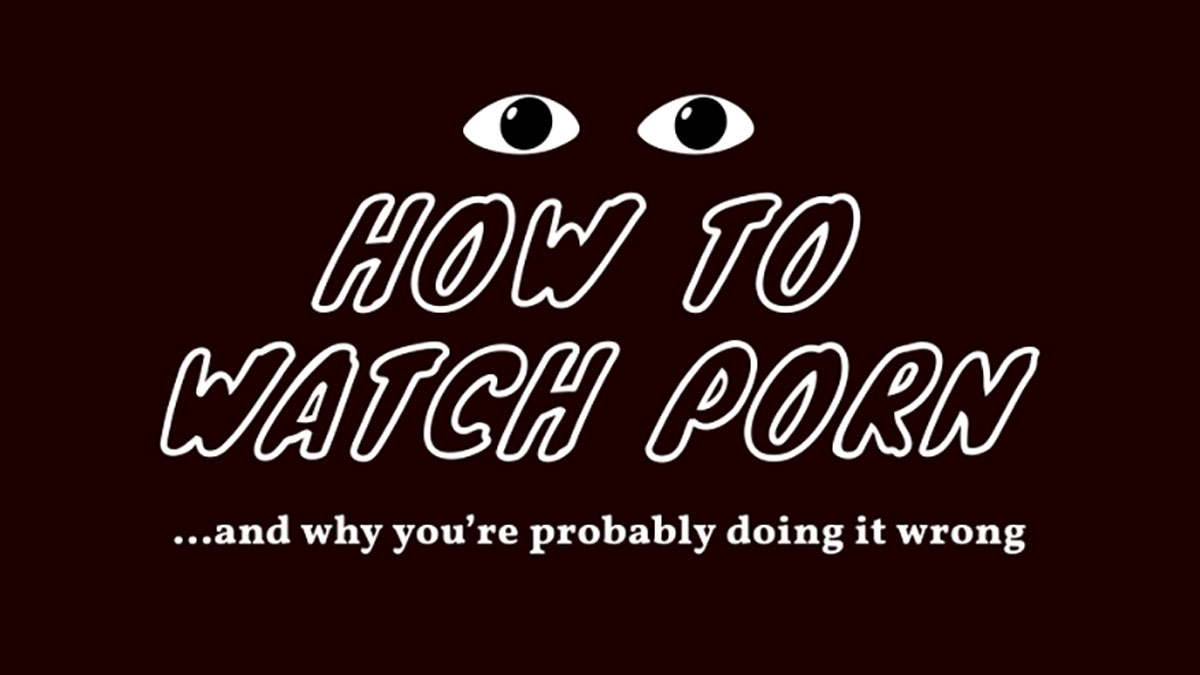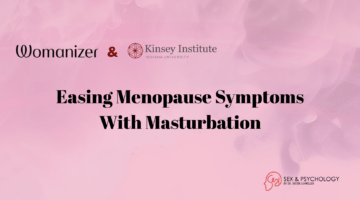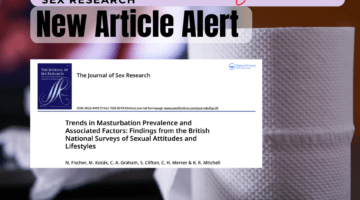Porn Literacy With a Side of CBT: Trying Out the “How to Watch Porn” Course
November 30, 2022 by Olivia Adams
Consider this — what if you could take a class in which your homework was to watch porn every week?
This is what Lustery, an online porn platform that focuses on “homemade” content, is offering with their “How to Watch Porn” course which launched on November 14. The course consists of eight episodes that each cover a “lesson” on how to be a more mindful and ethical porn consumer. All together, the course is about two hours long, but Lustery recommends stretching the episodes out over a couple weeks or more. And while most of the porn content on Lustery is subscription-based, the “How to Watch Porn” course is free.
While porn literacy is a popular topic in the broader world of sex education, Lustery’s course fills a hole in terms of readily accessible resources on this topic. Pornhub’s Sex Ed series provides a similar service for free, but given the considerable ethical concerns that have been reported surrounding PornHub as a platform, it is exciting to see a new platform entering the porn education space. This also isn’t Lustery’s first foray into providing pleasure as well as education—in May 2021, the platform launched the “12 Days of Self-Sex” booklet (also available for free) in an effort to combat stigma surrounding masturbation. In October 2021, they also collaborated with the ComeCurious YouTube channel to publish videos on sex and orgasm tips among other topics.
Earlier this month, I decided to test out all 8 inches—I mean episodes of the “How to Watch Porn” course in one sitting. Two things stuck out to me immediately. First, Lustery and the four educators for this project are very invested in an almost CBT-style (cognitive-behavioral therapy) approach to sex education, especially in a format that centers pornography.
Each episode or lesson included a message about mindfulness, taking the course at your own pace, and making space to process each lesson’s topic, especially given the taboos and stigmas that surround porn, masturbation, and sexuality in general. The course even includes self-reflection tasks that ask participants to sit with their own relationship to porn. In this way, it feels like a real class rather than a series of videos that you might put on as background noise. The course definitely demands your attention but also provides exercises and intriguing questions to keep your attention. It was engaging, not tedious.
The second point revolves around Lustery’s sense of what the porn industry should be like and, in many ways, how the Lustery platform itself practices what it preaches. Nearly every video (if not every video) included a note on the importance of consent in porn consumption, production, and in social relationships as a whole, sexual or not.
This stance demonstrates how Lustery’s course is different from a more generalized sex education approach —“How to Watch Porn” is all about pornography, including the industry itself and our relationship to it as consumers. The course discusses not only porn as a conduit for understanding our own desires and fantasies (and yes, they take time to explain the difference between the two) but also provides a thoughtful discussion of the problems with the porn industry and how to participate in it more ethically. For example, the course urges that an ethical porn consumer always buys their porn; it is no coincidence that Lustery itself is a subscription-based porn website. For me, the most useful part of the series was a list of concrete tips on how to find ethical porn among the landmines strewn across the online porn environment.
Overall, the Lustery “How to Watch Porn” course is a win for porn literacy education. Its coverage of topics from simply what is porn to how to find porn that represents your own experiences and interests will certain help folks engage in the porn industry more thoughtfully while also combating cultural norms that position porn, masturbation, and sex as a source of shame or sinfulness. The series even discusses the controversy of porn addiction and how that controversy affects mental healthcare.
It is important to note that this series does focus on Western conceptions of pornography, but also acknowledges this limitation. Also, while the series sometimes defaults to binary gendered language (“women do this, men do that”), it does acknowledge issues related to the gender binary and heteronormativity, making it accessible to a diverse audience.
My final review: whether you’re new to porn or a long-time viewer, there’s something important to be learned here. If you’re interested in exploring the ins-and-outs of the porn industry and want to know what it means to be a mindful porn consumer, check out Lustery’s “How to Watch Porn” course.
Check out the “How to Watch Porn” course here.
This post was written by Olivia Adams, Co-Managing Editor of Sex and Psychology. Learn more about Olivia here.
Want to learn more about Sex and Psychology? Click here for more from the blog or here to listen to the podcast. Follow Sex and Psychology on Facebook, Twitter (@JustinLehmiller), or Reddit to receive updates. You can also follow Dr. Lehmiller on YouTube and Instagram.

Dr. Justin Lehmiller
Founder & Owner of Sex and PsychologyDr. Justin Lehmiller is a social psychologist and Research Fellow at The Kinsey Institute. He runs the Sex and Psychology blog and podcast and is author of the popular book Tell Me What You Want. Dr. Lehmiller is an award-winning educator, and a prolific researcher who has published more than 50 academic works.
Read full bio >


